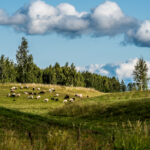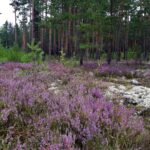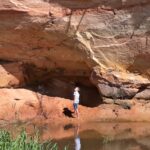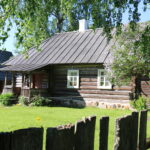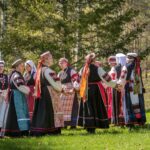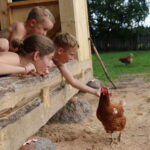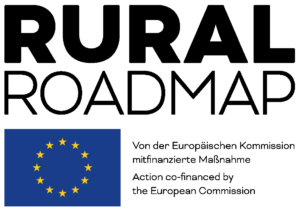
Setomaa, Estonia
Setomaa is located in the outermost parts of Southeast Estonia, the municipal roads partially cross into Russian territory. Around 3200 residents live in 156 villages and hamlet-like settlements. The municipality Setomaa originated in 2017 from the fusion of four former municipalities, which are home to the sovereign ethnic group of the Setos with their own language and culture. The Seto territory, which also spans Russian territory, has been dissected since 1991.
Its location on the edge of the European Union initially had a very negative impact for the municipality; especially the young population emigrated from the region. Beginning in 2005, targeted impulses to strengthen the region and boost its appeal were established, since 2008 these efforts are based on a development plan that sets strategic guidelines and designated goals. These goals are gradually implemented and expanded.
Central values are the rediscovery and preservation of the distinct culture of the Setos and the retrieval of young people to the community. Language, culture and religious influence are unique features that are reintegrated into the society. The unique traditions are perceived and lived as a source of strength and stability, but not as a rigid concept. In addition to activities in respect to ethnic traditions, a promotion program for young people was developed to make settlement in Setomaa particularly attractive.
Efforts were also made in regards to economic promotion, mainly aiming to establish a distinct regional brand to create value, with a focus on innovative, small enterprises and tourism.
There is an extraordinary balance between economy and ecology in all measures. Agriculture is biologically driven and focused on new niche products that are suitable for farming on swampy soil. The establishment of quality-oriented, ecologically and socially compatible tourism is rooted mainly in the renovation of traditional famsteads and their refunctioning as accommodations. In collaboration with university, the utilization of therapeutic mud from regional swamps at the “Sanatorium” – one of the municipality’s leading establishments – has been enhanced. Improving energy standards and increased use of geothermal and photovoltaic energy are other important projects.
Noteworthy is also the road variety of educational establishments and the education system. The municipality has four kindergartens, one of them in Seto, several daycare facilities with long opening hours, multiple comprehensive schools and one high school to achieve matriculation. All schools are run as full-time establishments with a variety of additional educational and leisure programs. The cafeterias are equipped with regional, biological products. The municipality offers numerous (mobile) services for all age groups, including fours municipal care facilities.
Aside from local measures and projects, copious international activities, particularly in collaboration with Latvia and Russia, are positively outstanding. One example is the multi-level project project in collaboration with the Russian Seto-region Pskow, aiming to create communally used agricultural infrastructure to refine and directly market local goods. For example, former stables were transformed into a modern refrigerated warehouse.
One particular quality of Setomaa can be found in its small-structured landscape with arable lands and meadows, forests, swamps and waterfronts around the Peipu lake, the fifth largest fresh water lake in Europe. This exceptional landscape quality is of great importance for the brand “Setomaa”, which is why it is maintained with great care. The cultural heritage is maintained and used for tourism in combination with agricultural resources. Another focal point remains the establishment of tourism as a modern form of deceleration within a region of exceptional culture and healthy nature. Infrastructural expansion of several lake ports as a base for various types of water sports support this concept.
Finally, the cooperation among various political and cultural committees, economy, educational establishments and associations, ensured by a monthly meeting, is also worth mentioning. The success in development in Setomaa is proof that it has found a sustainable way into the future despite its difficult history – offering local answers to global challenges.
Evaluated: 2020
